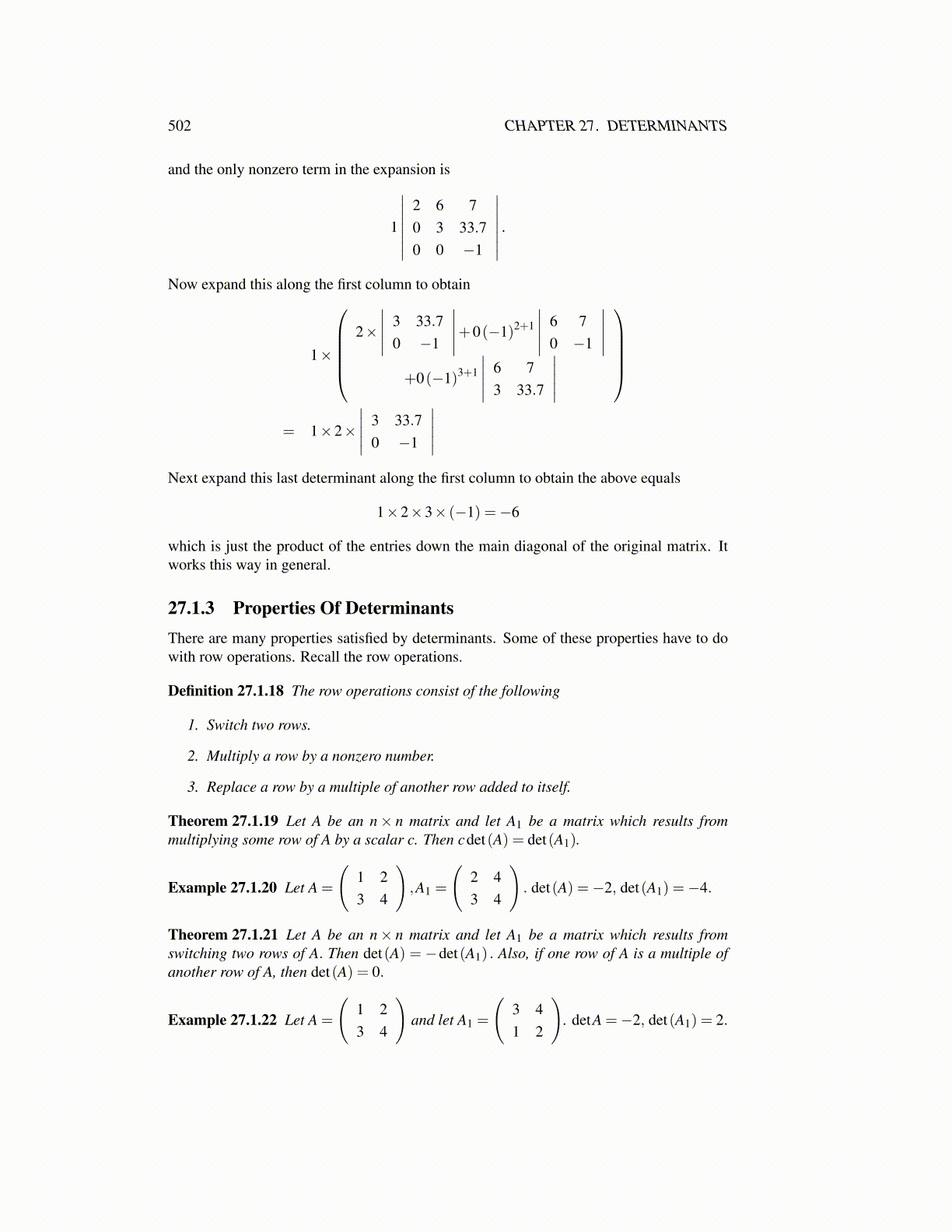
502 CHAPTER 27. DETERMINANTS
and the only nonzero term in the expansion is
1
∣∣∣∣∣∣∣2 6 70 3 33.70 0 −1
∣∣∣∣∣∣∣ .Now expand this along the first column to obtain
1×
2×
∣∣∣∣∣ 3 33.70 −1
∣∣∣∣∣+0(−1)2+1
∣∣∣∣∣ 6 70 −1
∣∣∣∣∣+0(−1)3+1
∣∣∣∣∣ 6 73 33.7
∣∣∣∣∣
= 1×2×
∣∣∣∣∣ 3 33.70 −1
∣∣∣∣∣Next expand this last determinant along the first column to obtain the above equals
1×2×3× (−1) =−6
which is just the product of the entries down the main diagonal of the original matrix. Itworks this way in general.
27.1.3 Properties Of DeterminantsThere are many properties satisfied by determinants. Some of these properties have to dowith row operations. Recall the row operations.
Definition 27.1.18 The row operations consist of the following
1. Switch two rows.
2. Multiply a row by a nonzero number.
3. Replace a row by a multiple of another row added to itself.
Theorem 27.1.19 Let A be an n× n matrix and let A1 be a matrix which results frommultiplying some row of A by a scalar c. Then cdet(A) = det(A1).
Example 27.1.20 Let A =
(1 23 4
),A1 =
(2 43 4
). det(A) =−2, det(A1) =−4.
Theorem 27.1.21 Let A be an n× n matrix and let A1 be a matrix which results fromswitching two rows of A. Then det(A) = −det(A1) . Also, if one row of A is a multiple ofanother row of A, then det(A) = 0.
Example 27.1.22 Let A =
(1 23 4
)and let A1 =
(3 41 2
). detA =−2, det(A1) = 2.